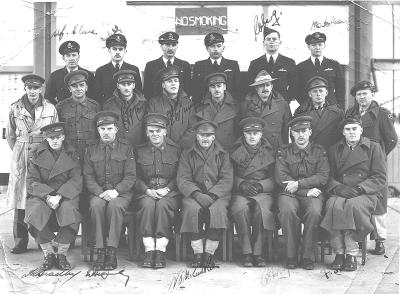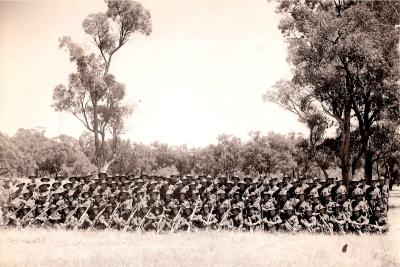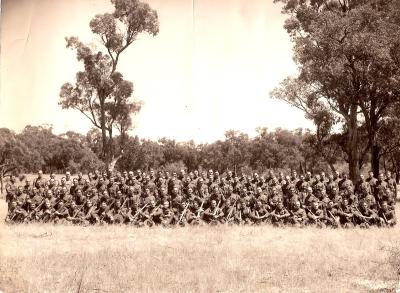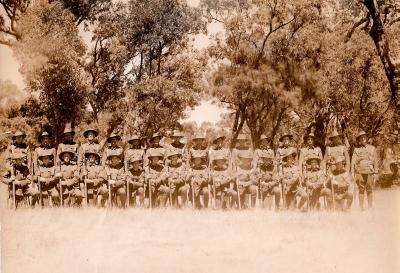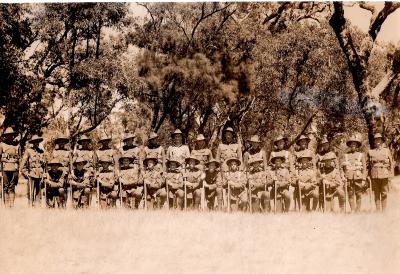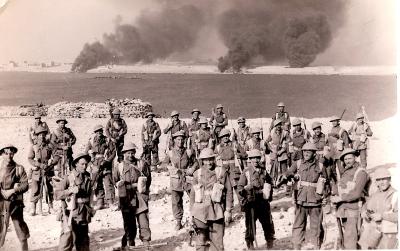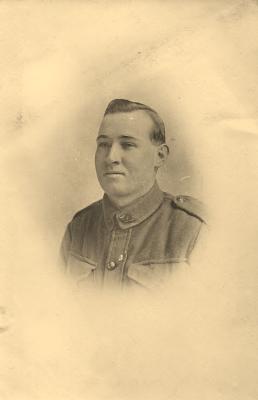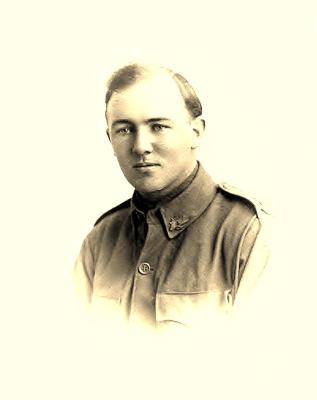World War 2, Southwest Pacific, Borneo, Balikpapan, LST1016, 1945
1945View from His Majesty’s Australian Ship Shropshire of troops of 7 Division going ashore at Balikpapan, US Navy LST1016 in foreground.
HMS Shropshire, the first ship of the name in the Royal Navy, commissioned on 24 September 1929. For the next 10 years she served in the Mediterranean. At the outbreak of World War 2 she was assigned to protection duties in the South Atlantic and Indian Oceans. Following the loss of the heavy cruiser HMAS Canberra on 9 August 1942 in the Battle of Savo Island, the British Government approved the transfer of Shropshire to the Royal Australian Navy as a replacement.
As HMAS Shropshire she supported operations in the South West Pacific including the Battle of Leyte Gul. In June 1945 she supported the landings at Brunei and was part of the force at the Balikpapan landings on 3 July. Shropshire then returned to the Philippines and was there when the Japanese surrendered. She sailed for Tokyo Bay and was present for the surrender ceremony. In May 1946 Shropshire left Australia for the United Kingdom, carrying the Australian Contingent for the Empire Victory celebrations. In January 1947 she became Squadron representative in Japanese waters, returning to Sydney in March 1947 in preparation for paying off, her days as an active warship ended. She was scrapped in 1954.
https://www.navy.gov.au/hmas-shropshire
https://en.wikipedia.org/wiki/HMS_Shropshire
Details
Details
A landing ship, tank, (LST) is a ship first developed during World war 2 (1939–1945) to support amphibious operations by carrying tanks, vehicles, cargo, and landing troops directly onto a low-slope beach with no docks or piers. The shallow draft and bow doors and ramps enabled amphibious assaults on almost any beach.
The LST had a highly specialized design that enabled ocean crossings as well as shore groundings. The bow had a large door that could open, deploy a ramp and unload vehicles. The LST had a flat keel that allowed the ship to be beached and stay upright. The twin propellers and rudders had protection from grounding. The LSTs served across the globe during World War II, including in the Pacific War and in the European theatre.
The first tank landing ships were built to British requirements by converting existing ships; the UK and the US then collaborated upon a joint design. The British ships were used in late 1942 during the Allied invasion of Algeria, by 1943 LSTs participated in the invasion of Sicily and mainland Italy. In June 1944 they were part of the huge invasion fleet for the Normandy landings.
Over 1,000 LSTs were laid down in the United States during World War II for use by the Allies; the United Kingdom and Canada produced eighty more.
Landing Ship, Tank (LST), or tank landing ship, is the naval designation for ships first developed during World War 2 (1939–1945) to support amphibious operations by carrying tanks, vehicles, cargo, and landing troops directly onto shore with no docks or piers. This enabled amphibious assaults on almost any beach.
The LST had a highly specialized design that enabled ocean crossings as well as shore groundings. The bow had a large door that could open, deploy a ramp to unload vehicles. The LST had a special flat keel that allowed the ship to be beached and stay upright. The twin propellers and had protection from grounding. The LSTs served across the globe during World War 2. United States Navy Landing Ship Tank 1016 was laid down in 1944 and scrapped in 1947.
https://www.navsource.org/archives/10/16/161016.htm
https://www.history.navy.mil/research/histories/ship-histories/danfs/l/lst-1016.html
https://www.navsource.org/archives/10/16/161016.htm
Australian Army Museum of Western Australia
Australian Army Museum of Western Australia
Other items from Australian Army Museum of Western Australia
- World War 2, 1944
- World War 2, Australia Western Australia, 2/28 Battalion, 1941
- World War 2, Australia Western Australia, 2/28 Battalion, 1941
- World War 2, Australia Western Australia, 1941
- World War 2, Australia Western Australia, 1941
- World War 2, Australia Western Australia, 1941
- World War 2, Australia, 1940
- World War 1, Middle East, 309 BLYTHE, MM, 25 Battalion, 1916
- World War 1, Australia Western Australia, 1914
- World War 1, Europe, 1918
- World War 1, Europe, 1916
- World War 1, Europe, 1916
